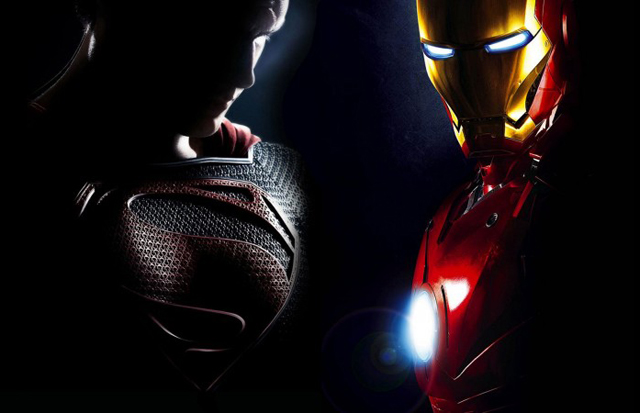
Of all the things that Marvel has changed over the last decade in Hollywood, perhaps it’s most influential would be the concept and execution of a shared cinematic universe. There have been serialization in movies before, but never to this magnitude, and with this many seperate franchises involved. And the experiment has become on of the most astounding success stories in cinema history, with Avengers: Endgame currently on it’s way to the all time box office crown. Because of Marvel’s success with it’s shared universe, the last decade saw many more studios try to build up cinematic universes of their own; all to varying degrees. Some proved surprisingly successful (The Conjuring universe), while many others fell flat (Ghostbusters, The Amazing Spider-Man), and some failed in the most spectacular of fashion (Universal’s Dark Universe). While Marvel’s example was largely the blueprint for many of these wannabe cinematic universes, few of them could ever figure out exactly how to harness it and make it work for them. What most didn’t realize is that the Marvel Cinematic Universe succeeded both by it’s superb organization, but also by sheer luck. It came at the right time, when audiences were willing to follow along with a large arcing narrative that’s pieced together through multiple films. And because they came at the right time, they created a foundation that has helped to support everything that has followed after, and with seemingly no competition. It’s that foundation that more than anything has become responsible for it’s success, and to see how it stacks up with another like minded cinematic universe, it helps to take a look at where things started to determine what makes and breaks such an endeavor.
If there was any cinematic universe that could compete with the likes of Marvel for cinematic dominance, it would be it’s own competitor on the comic book shelves; DC comics. Before Marvel began it’s rise to box office dominance, it was DC who had long been the standard bearer when it came to comic book adaptations. Richard Donner’s classic Superman (1978) was for the longest time the quintessential super hero movie, showing for the first time how stories and characters from the comic book page could be translated faithfully to the big screen. A decade later, Tim Burton introduced Batman to the big screen with his 1989 film, which further increased the box office appeal of comic book characters. It wouldn’t be until the turn of the millennium that Marvel finally jumped in with their first entry into the genre, naturally focused on their most popular character from the comics, Spider-Man. Sam Raimi’s 2002 broke all sorts of box office records at the time, and ushered in an era of box office dominance that continues to this day. For much of the 2000’s, DC and Marvel were equally competitive at the box office, with Raimi’s Spider-Man films and Christopher Nolan’s Dark Knight trilogy trading places constantly atop the box office charts. But, one thing that Marvel didn’t have was the organizational support that DC had with their parent company Warner Brothers. So, in comes producer Kevin Feige who established Marvel Studios, with the intention of not only giving the publisher more creative control over it’s characters, but also to create a shared cinematic universe where all of them could coexist on the big screen. An idea like this seemed natural, since it’s largely what goes on in the comic books themselves, but what shocked most people was the fact that Marvel planned to launch this with the most unlikely of characters; Tony Stark aka Iron Man. Iron Man is an icon now, but a decade ago, he was largely viewed as second tier compared to the likes of Spider-Man. But, it was a gamble that paid off and in many ways it was the key to the success of everything that followed after. Iron Man was the pivotal foundation and it becomes all the more apparent when you stack up where his place at the start of a cinematic universe compares to another, with DC beginning it’s own universe on the back of it’s most iconic character; Superman.

“They say that the best weapon is the one you never have to fire. I respectfully disagree. I prefer the weapon you only have to fire once.”
Iron Man had long been in development for years, with few people ever seriously interested in making the film, or playing the character. For a while, Tom Cruise expressed interest in playing Tony Stark, but the movie never materialized, and ironically Tom ended up being the foundational face of one of the most embarrassing launches for a failed cinematic universe ever, with his remake of The Mummy (2017) which was supposed to begin the Dark Universe. The newly formed Marvel Studios finally took the character seriously, and knew right away that to make the character work, it needed people who were the right match. Luckily they struck upon the likes of Jon Favreau, who as a director brought a unique sense of mixing action and humor that in many ways perfectly suited the wise-cracking character from the comics. But Favreau’s greatest decision would end up proving to be his casting choice for Iron Man. You would think that the original inclination would be to go with a movie star of Tom Cruise’s caliber, but instead Favreau sought out Robert Downey Jr. for the role. It’s true that Downey does bear a natural resemblance to Tony Stark as he’s been envisioned on the the comic page, but at the time, casting him in the role was seen as a huge risk. After years of struggling through a crippling drug addiction and spending time in prison for multiple violations, Downey’s career as an actor was pretty much dead, so casting him in anything was a huge risk. But, Marvel saw it Favreau’s way and took the chance, and it proved to be the beast choice they could ever make. The reason for this is simple; Robert Downey Jr. was the only choice to play Tony Stark, because he is Tony Stark. Stark himself is a self-destructive, arrogant character who seeks redemption and a chance to better himself, and that turn for the character closely mirrored Downey’s own spiral and climb back out of the abyss. Both him and Favreau knew that it wasn’t the iron suit that made the hero, it was the person inside, and for the movie to work, you needed to faithfully capture that aspect of the character. Downey’s contribution became the example that all future casting choices had to follow, and from the Marvel side, their continued success comes from knowing that you cast based on the person and not on how well they’ll look in the costume.
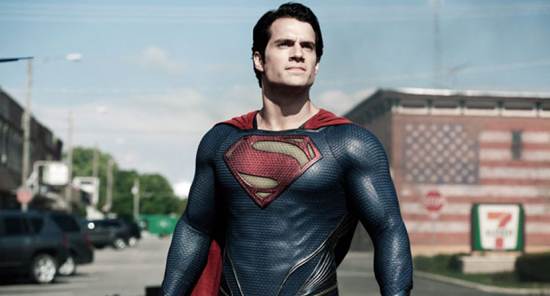
“Born on Krypton and raised on Earth, you had the best of both and were meant to be the bridge between two worlds.”
That has in many ways been where most other cinematic universes have fallen apart. For DC, they have had a mixed result from their casting choices. Some have worked out really well, like Gal Gadot as Wonder Woman or Jason Momoa as Aguaman, while others failed miserably, like Jesse Eisenberg as Lex Luthor. But where DC found itself at a disadvantage was not merely in how they cast the character, but in the lack of insight into knowing who these characters really are. This was apparent in the movie that was meant to launch their own cinematic universe, titled Man of Steel (2013). Steel was their relaunch of the Superman mythos, using their most iconic hero as a the foundation on which they would build the universe. But one thing that we’ve come to learn from building a cinematic universe with already established characters is that if you are going to start from scratch, you need to find a way to make the character feel fresh again. Marvel managed to do that successfully with both the Hulk and Spider-Man, largely by ignoring all past character development and just having the characters already established with their powers. Man of Steel, however, opted to go right back to the beginning and show us Superman’s origin story again, which only made the movie feel superfluous, because it’s a story-line we already know and are not surprised by. Not only that, but the movie lacks any real insight into Superman as a character, instead putting every development in his life up as a mark of destiny; that he was always meant to be this hero, and none of it feels earned in the end. Actor Henry Cavill is fine in the role, and does indeed look the part, but his Superman doesn’t inspire us as well as past Supers like Christopher Reeve. There never is that moment where he makes the choice to be Superman; to be that crusader for good in the world. Iron Man devotes half it’s movie to watching Stark build and refine his super suit, showing how he’s devoting himself to becoming an ideal, using his skill set towards a greater purpose. Man of Steel’s Superman just exists because the universe needs him to.
There truthfully is no comparison between characters, since Tony Stark is a mere mortal man who builds himself into a hero, while the other is a god among men who must learn the best way to use his gifts in life. One starts as a hero, while the other grows into a hero. But there is plenty of similarities that both movies share, and it mainly has to do with how they establish themselves as the bedrock of their cinematic universes. Again, Marvel establishes it’s cinematic universe much better, but one can almost argue that they do it a bit too much in the movie. For instance, there are Easter eggs thrown about all over the movie, that for some eagle eye viewers hints at movies that would be coming in the future, like seeing Captain America’s shield subtly placed on Tony Stark’s workbench in his underground lab. The introduction of S.H.I.E.L.D. is also executed well as a part of the movie, with Samuel L. Jackson’s end credits appearance as Nick Fury now becoming the stuff of legend. But the movie also sets up threads that never followed through in the MCU, like the introduction of the Ten Rings terrorist group, which was meant to allude to Iron Man nemesis The Mandarin, and we all saw how disappointing that thread turned out to be. Marvel sometimes falls into the trap of planting too many seeds that never fully take root, and that’s apparent in Iron Man, where it seemed they got too carried away sometimes with their fan service. Man of Steel by comparison plays it a little closer to the chest with their hints at a larger universe. For the most part it sticks closely with Superman’s story-line, and only throws in the barest sampling of Easter eggs, like a brief glimpse of corporate logos for LexCorp and Wayne Enterprises. With those, they could easily tease the things that we knew were coming next in the pipeline, namely Lex Luthor and Batman, and not have us distracted with universe wide elements known only to those who had read the comics. Of course, they would blow it with the Easter Egg heavy Batman v. Superman: Dawn of Justice, but at least Man of Steel knew to remain focused solely on Superman for the time being.
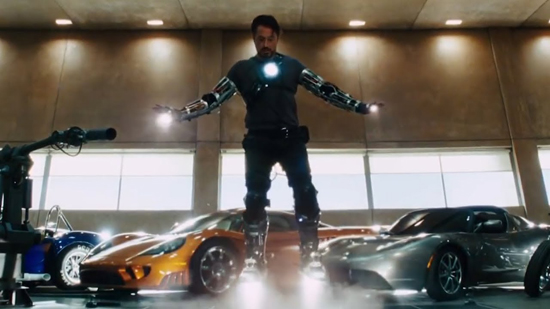
“Mr. Stark, you’ve become part of a bigger universe. You just don’t know it yet.”
The other advantage that Man of Steel carried with it is the fact that Superman has a far more legendary rogues gallery. Because of this, the stakes feel a little higher in Man of Steel than it does in Iron Man. For someone as over-powered as Superman to feel vulnerable, you need to have him face a threat on an equal level, and Man of Steel does that with the character of General Zod, played by Michael Shannon. A surviving Kryptonian like Superman, Zod matches the same power level, but combines this with a merciless, genocidal ambition for conquest. General Zod seeks to make Earth the new home for his people, and that means wiping out the native human population in the process, which Superman has lived among and been raised by since he was sent there as a child. For Superman, the fight with Zod is a confirmation of his duty to be Earth’s protector, and the movie does go out of it’s way to show that the confrontation with Zod is going to be the test of his full potential. Even the much maligned death blow that Superman uses to stop Zod has a purposefulness in the story, because it places doubt in Superman’s mind if he did the right thing or not; which despite being out of character compared with the comics, does show a crucial development in his character that shows that he still is capable of being vulnerable. Sadly, it didn’t help that director Zack Snyder made the baffling defense of this choice by saying that he believed Superman had to kill in order to learn that killing is wrong (???). By contrast, Iron Man’s first nemesis is just a rival seeking to outshine his accomplishments out of pure pettiness, personified in the character of Obediah Stein. Sure, they got an acting legend like Jeff Bridges to play the part, who does have a menacing presence in the film, but Stein’s whole plan is just to build another Iron Man suit, only bigger, becoming the Iron Monger. Overall, he’s a weak villain that keeps the stakes pretty small in the original Iron Man. And that has been the case with most of the Iron Man films, where the hero far outshines the villains, despite having excellent actors filling the roles like Mickey Rourke and Ben Kingsley. In the end, Man of Steel benefited from a stronger villain, who almost made up for the lack of personality found in the hero himself.
For the most part, I did find more to like in the movie Man of Steel than dislike, but at the same time, it’s hard to ignore that it’s many flaws put the DCEU on such a rocky footing to begin with. A lot of that falls on the clearly miscast choice of director with Zack Snyder. Snyder was never a good fit with the character of Superman, because his style is so morose and devoid of light. He makes a fine choice for stylistic and gritty comic adaptations like 300 (2007) and Watchmen (2009), but not for a character as inspirational and good-natured as Superman. The biggest complaint about Man of Steel usually falls on the film’s muted color palette, which drains the joy out of the movie. It’s a far cry from the lush, bright colors of Donner’s original, and for comic book fans especially, it probably felt like a betrayal to see the blue and red of Superman’s costume be so de-emphasized. Man of Steel almost feels like a holdover from another era, where filmmakers almost felt ashamed of presenting a superhero dressed in brightly colored tights and a cape, and instead chose to make the costumes a little more modern and edgy. Marvel on the other hand, not only has chosen to faithfully translate their comic character’s looks to the big screen, but they seem to celebrate it as well. In Iron Man, during the process of building his final prototype for his suit, he decides to add a little “hot rod red” to the color scheme, matching the gold and red colors that the character model is famous for in the comics. This example has follow through with every Marvel character since, with Spider-Man returning back to his tights and Captain America proudly donning the red white and blue across his armor. More than anything, this brought the super hero genre out of it’s misguided tilt toward gritty make-overs and instead showed that it indeed was worthwhile to embrace everything fun about the characters, even their campy looks. Only now are we seeing DC finally adopt that ideal as well, with the light-hearted Shazam being the most recent example. Unfortunately, the Snyder style stuck to DC for far too long and hampered any chance of it striking the same chord with an audience that Marvel managed to achieve.
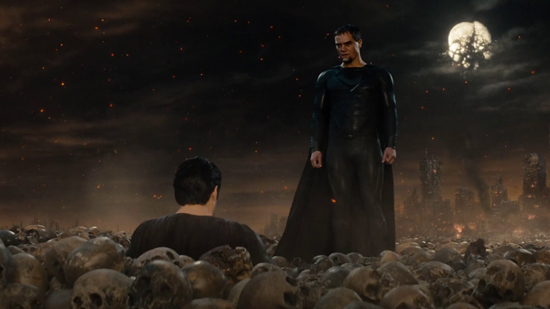
“I was bred to be a warrior, Kal. Trained my entire life to master my senses. Where did you train? ON A FARM?”
It’s hard to think what Marvel’s Cinematic Universe might have been like had Iron Man had not been it’s starting off point. Jon Favreau’s deft and well-intentioned approach is what Marvel needed for the launch of their ambitious plans, and it is remarkable that it was all built around an actor who once was considered to be un-hirable in Hollywood. The tables have certainly turned, and not only is Iron Man now an A-List super hero in the same league as Superman and Batman, but he’s even carried Spider-Man under his wing. Robert Downey Jr.’s on-screen charisma no doubt endeared the character to fans around the world, and it’s clear why he gave it his all over so many years. You could say that the life that Iron Man saved above all was that of the actor playing him. The movie saved his reputation, has kept him clean and sober for over a decade now, and has made him fans all over the world, something he certainly indulges as he promotes the movies worldwide in a fashion not all that dissimilar from the persona of Tony Stark. Hollywood loves a redemption story, and the real life one involving Robert Downey Jr. has been just that. Sadly, Superman’s most recent big screen outing hasn’t carried that inspiring story along with it. Henry Cavill, a talented actor in his own right, felt burdened by the lack of direction with his character and after a while, he felt that it just wasn’t worth continuing, so as of right now, Superman’s future on the big screen is once again in limbo. If DC had put more effort into the character, and given him a story arc as inspiring as that of Iron Man, they may have been able to hold onto their actors as long as Marvel has managed to hold onto theirs. The saddest part is that Cavill’s Superman doesn’t get the closure that he deserves, which is especially unfortunate considering how satisfying the departures in Avengers: Endgame turned out. It all shows that when you plan to build a major cinematic universe, it helps to make sure that you are getting it right the first time, and that involves a little bit of risk, a whole lot of luck, as well as embracing what made these characters beloved in the first place. That’s why Marvel are the kings of Hollywood right now, because they gambled and won, whereas DC tried to put their best horse forward and had him stumble out of the gate in a race he shouldn’t have started in the first place. All the more remarkable is that all of this, the MCU and this era of cinematic universes, was all started by a once disgraced actor playing man who built a suit of iron in a cave with a box of scraps.
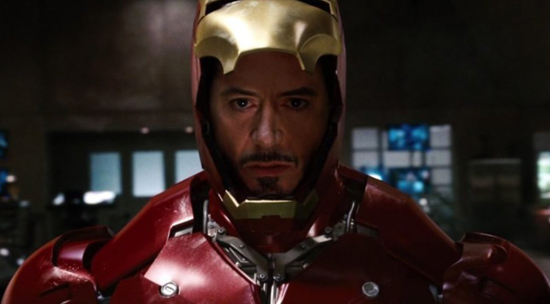
“I…AM…IRON MAN.”